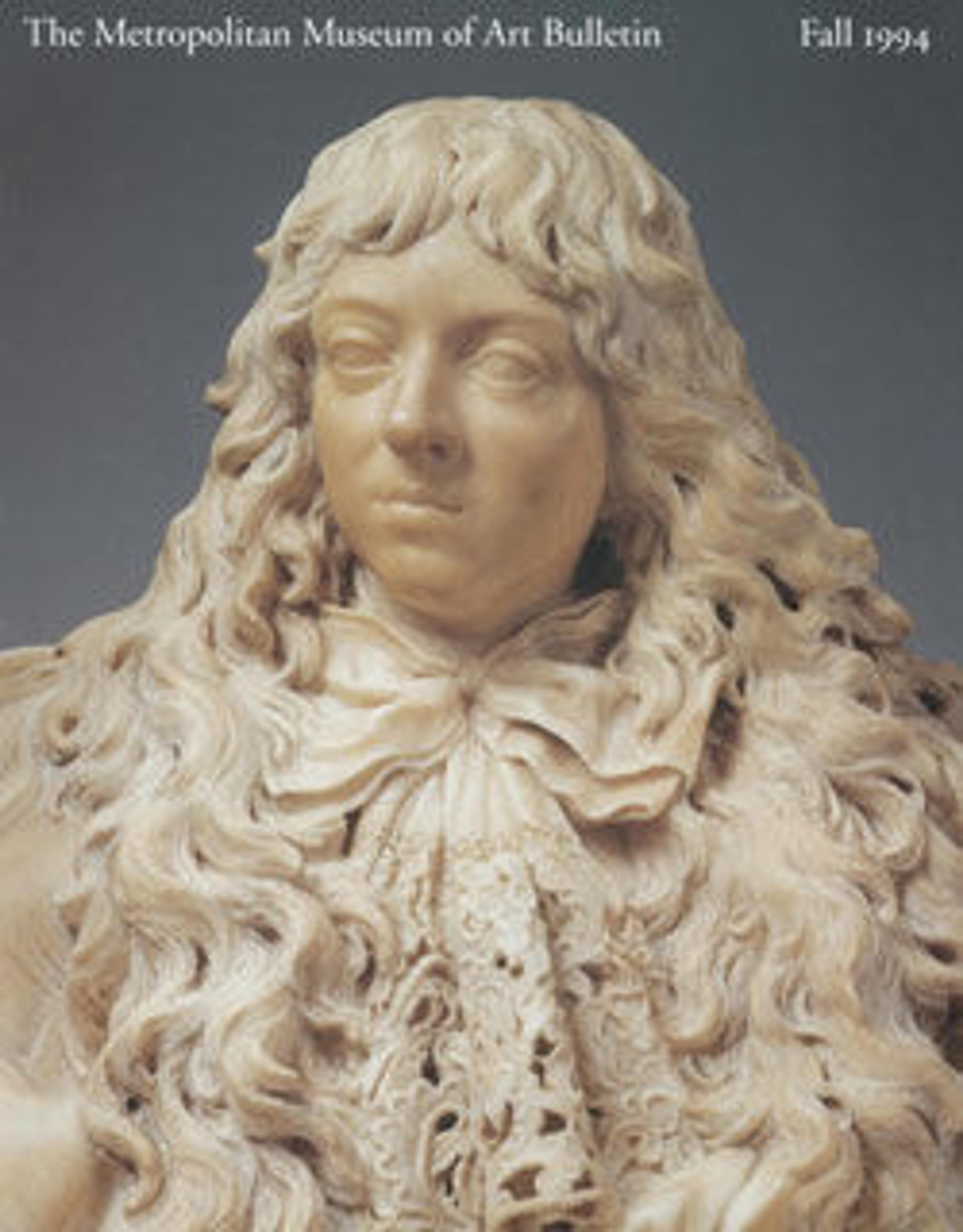Side chair
This is one of several side chairs known to survive from the dining room Christian Herter designed for William H. Vanderbilt's (1821-1885) house at 640 Fifth Avenue, New York. An iconography of bounty governed the room, drawn from Renaissance precedents as was popular during the period. The lush swag of flowers, nuts, and berries sculpted on the chair’s crest rail was one of several such motifs unifying the room’s carved oak furnishings and paneling: contemporary photographs show that on either side of the built-in buffet pairs of plump putti held similar swags aloft. The legs and stretchers, however, bear no relationship to European precedents and distinguish this chair as one of Herter's most original designs. The stretcher is a complex composition of interlocking parts held in taut balance by equal forces of vertical and horizontal tension. A pendant bow-shaped loop is connected to a pair of square rings mounted on a rod, which is braced against the legs by spreading palmettes; a carved sash, woven through the rings, curls around this element. Nineteenth-century seating furniture for dining rooms was typically upholstered in leather for ease of cleaning. The original covering of this chair was described in a period source as being a "dull-red, stamped leather, of special designs, relieved with gold in Cordova fashion." The gilded leather, in a modern replacement, and shaped brass mounts contrast brightly with the richly colored oak.
Artwork Details
- Title:Side chair
- Maker:Herter Brothers (German, active New York, 1864–1906)
- Date:1879–82
- Geography:Made in New York, New York, United States
- Culture:American
- Medium:Oak, brass, and reproduction leather upholstery
- Dimensions:35 x 23 7/8 x 21 3/4 in. (88.9 x 60.6 x 55.2 cm)
- Credit Line:Purchase, Margery Masinter, Sheila Wood Schwartz, Gloria Wells Sidnam, Julie Graham, Diana C. Landreth and Steven M. Kossak Gifts and Friends of the American Wing Fund, 1994
- Object Number:1994.80
- Curatorial Department: The American Wing
More Artwork
Research Resources
The Met provides unparalleled resources for research and welcomes an international community of students and scholars. The Met's Open Access API is where creators and researchers can connect to the The Met collection. Open Access data and public domain images are available for unrestricted commercial and noncommercial use without permission or fee.
To request images under copyright and other restrictions, please use this Image Request form.
Feedback
We continue to research and examine historical and cultural context for objects in The Met collection. If you have comments or questions about this object record, please contact us using the form below. The Museum looks forward to receiving your comments.
